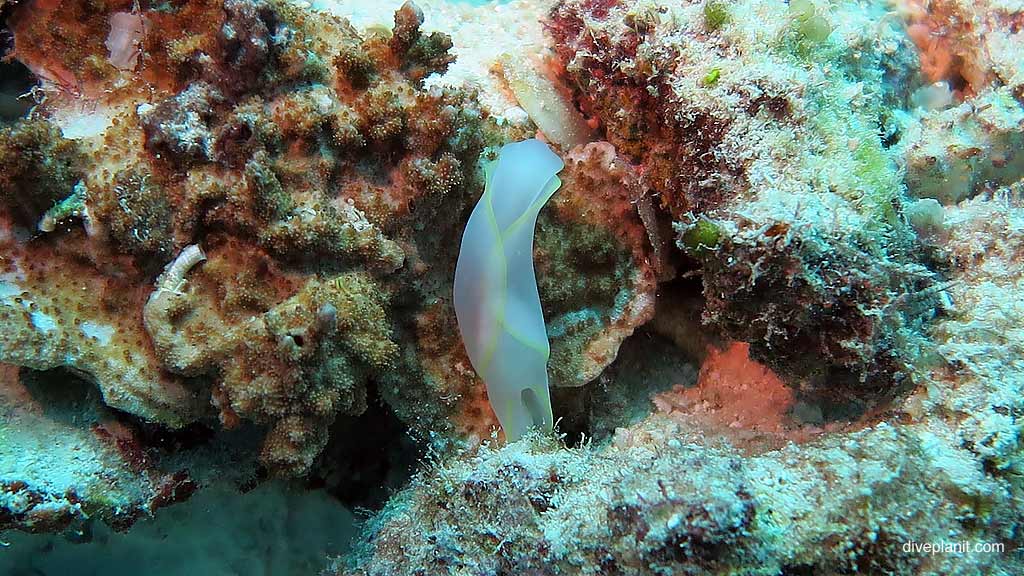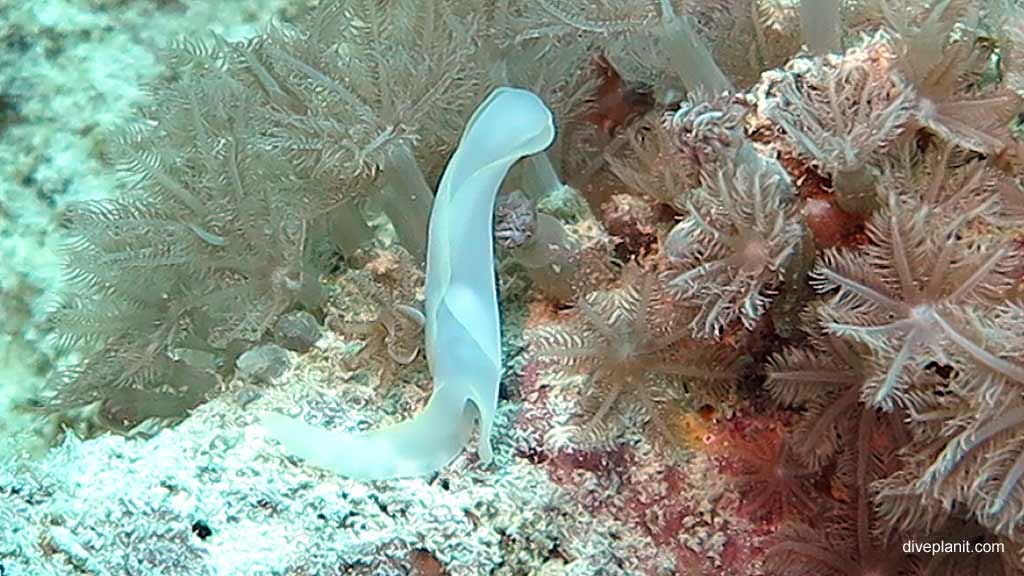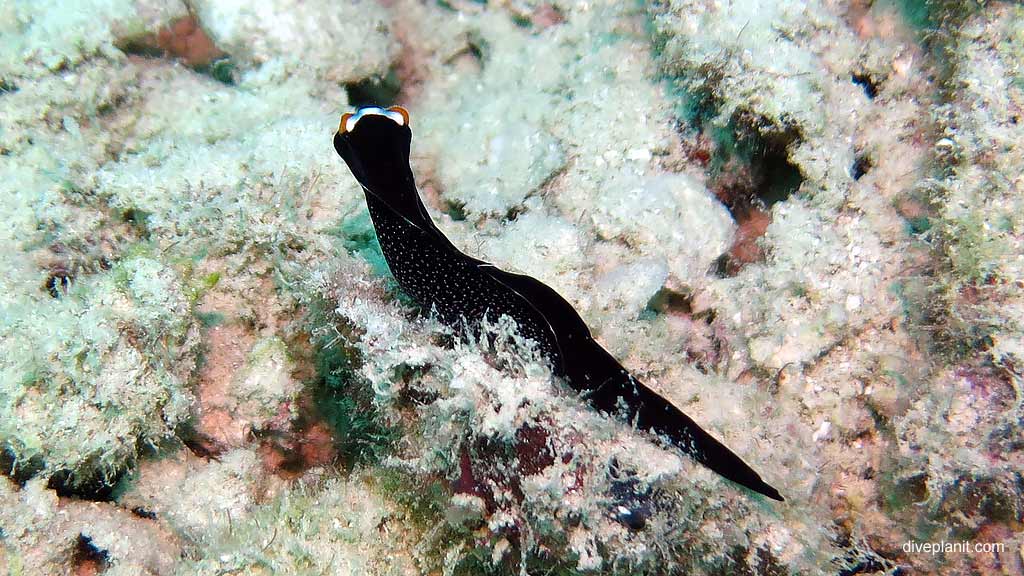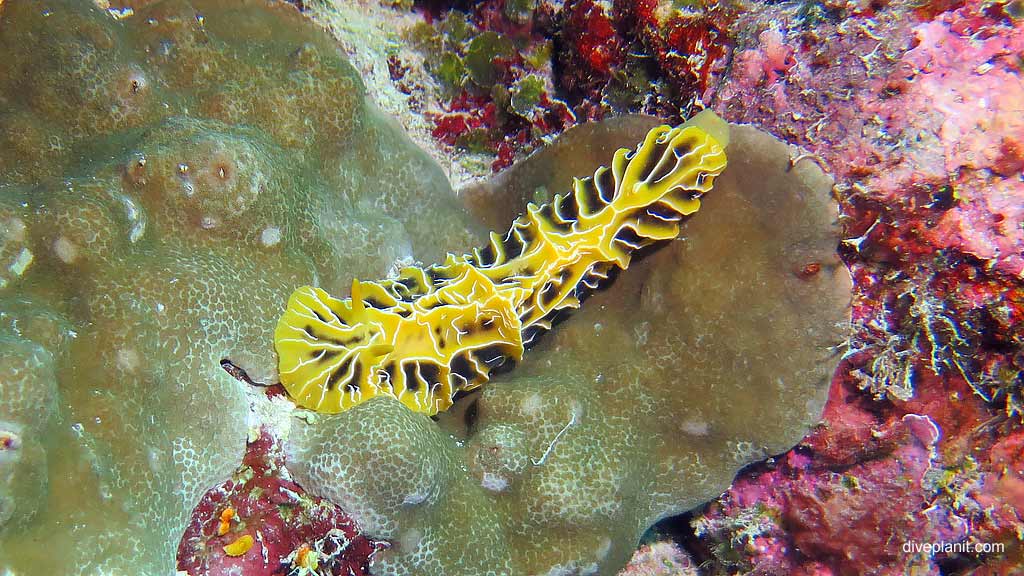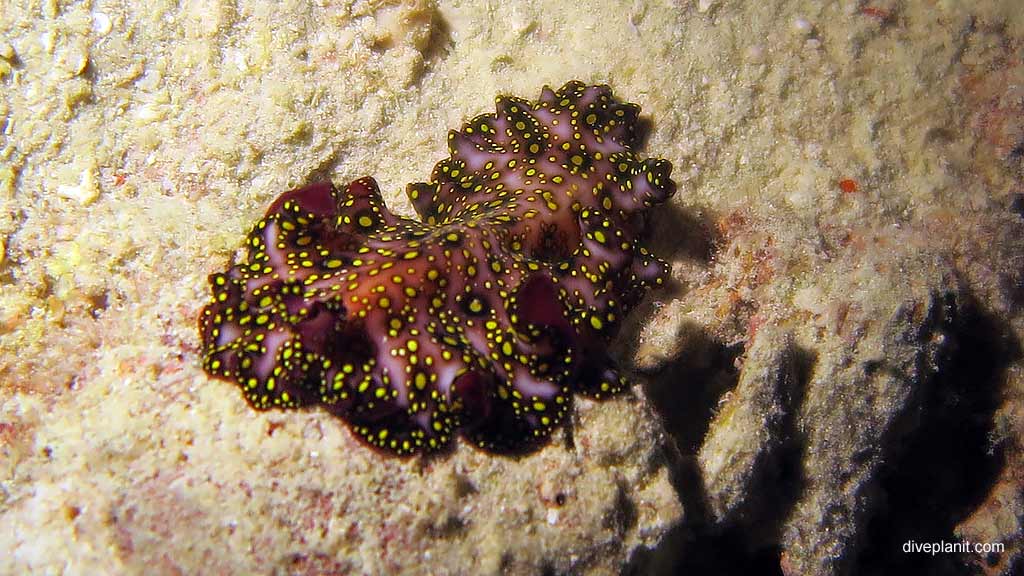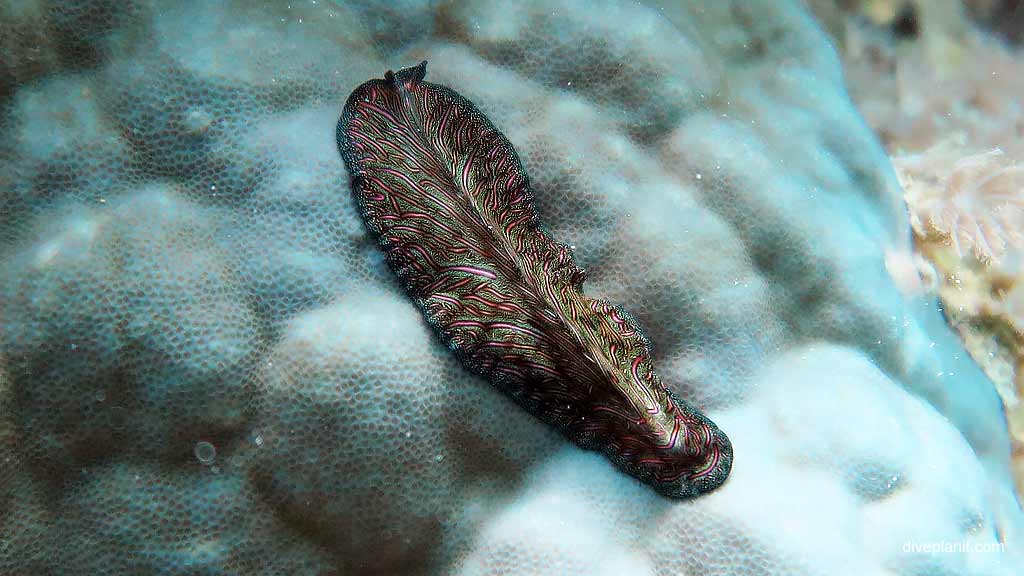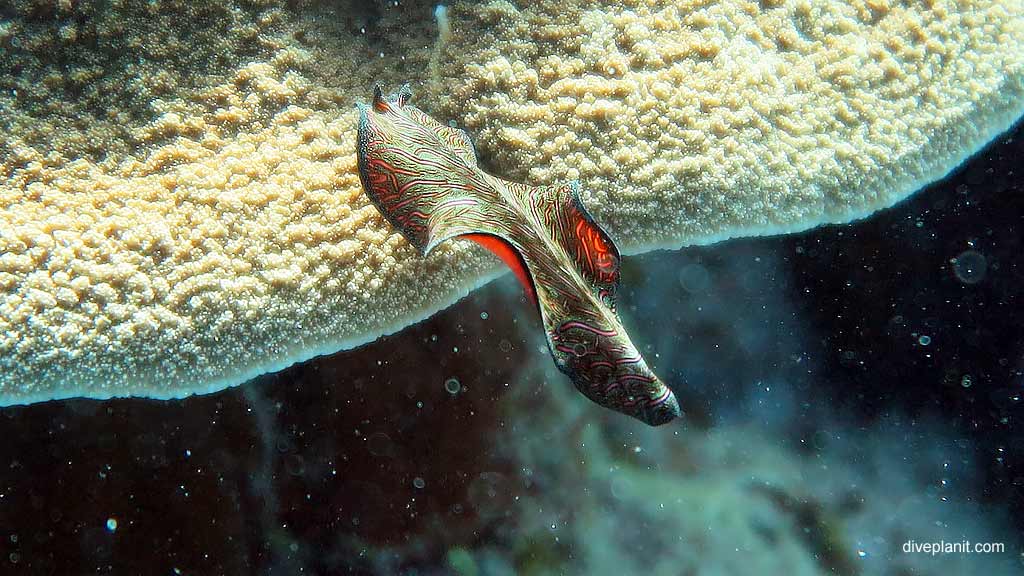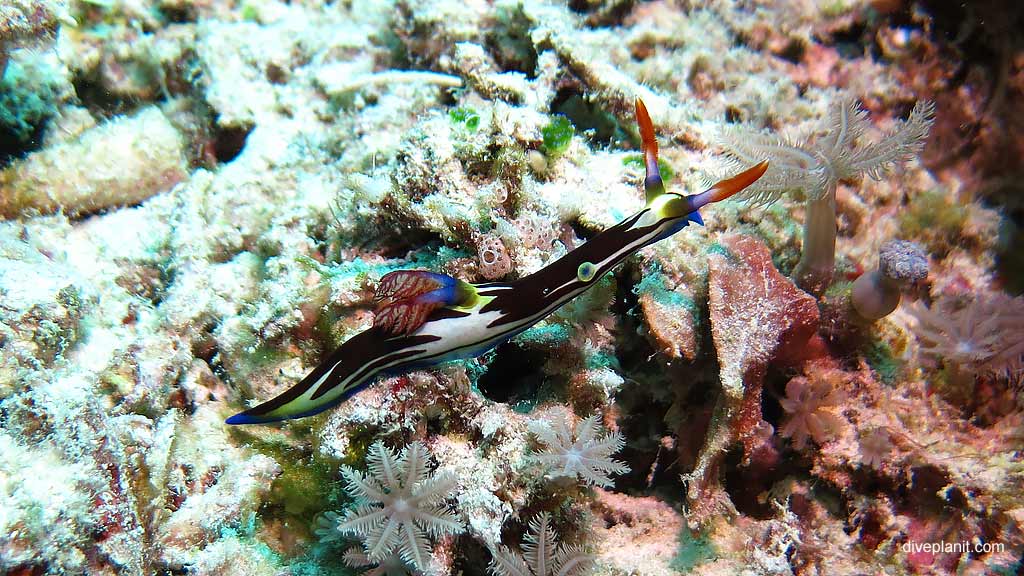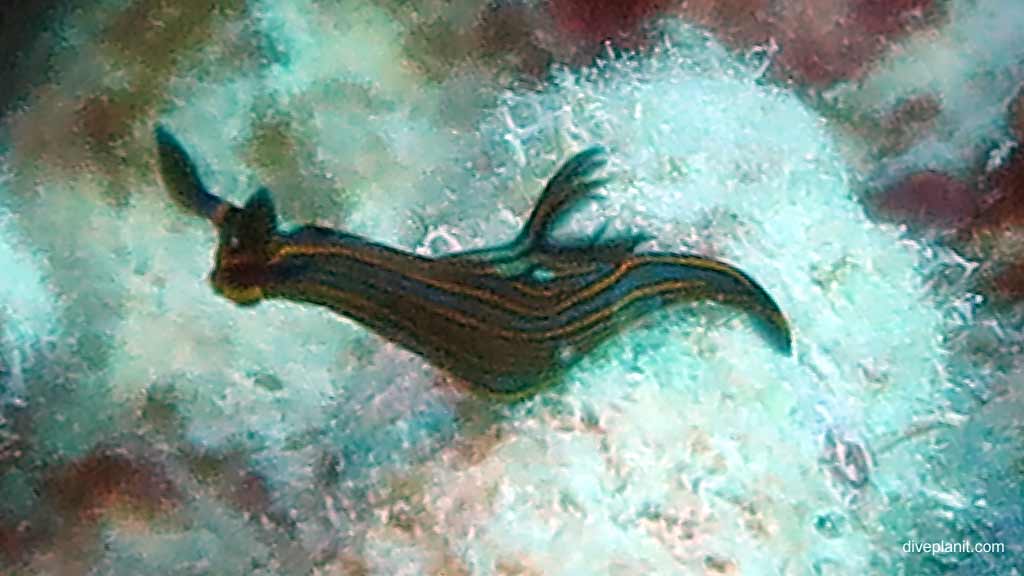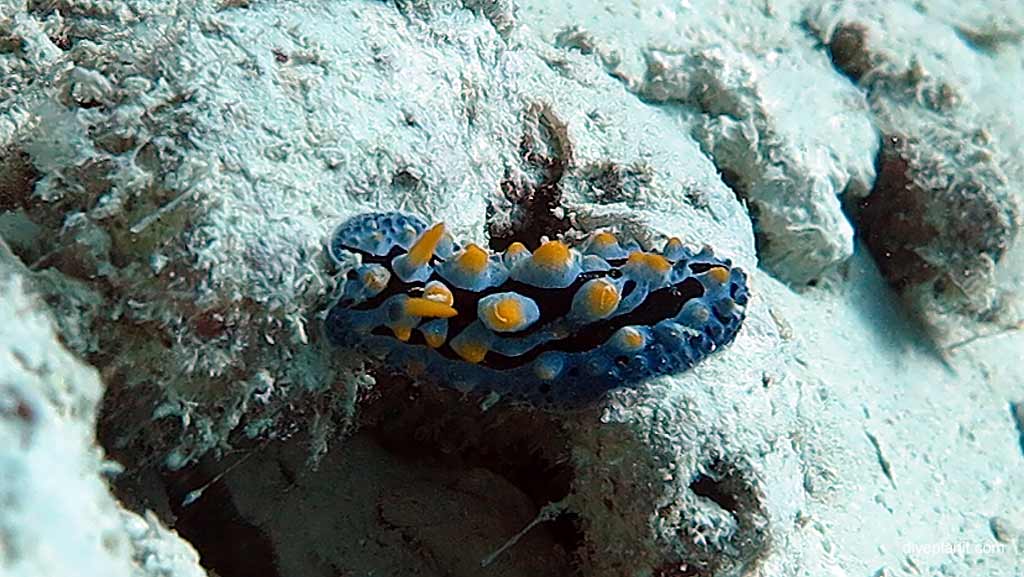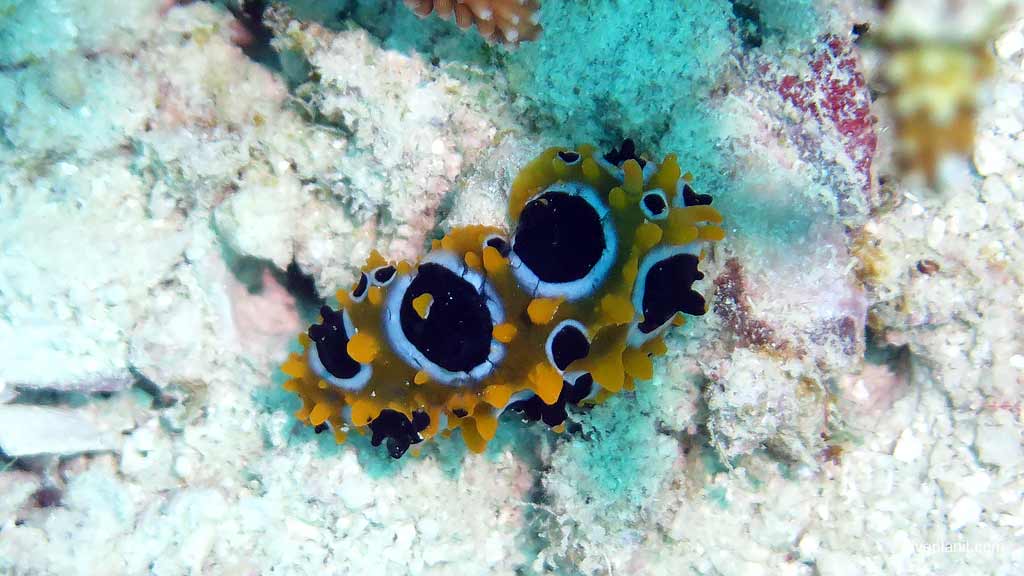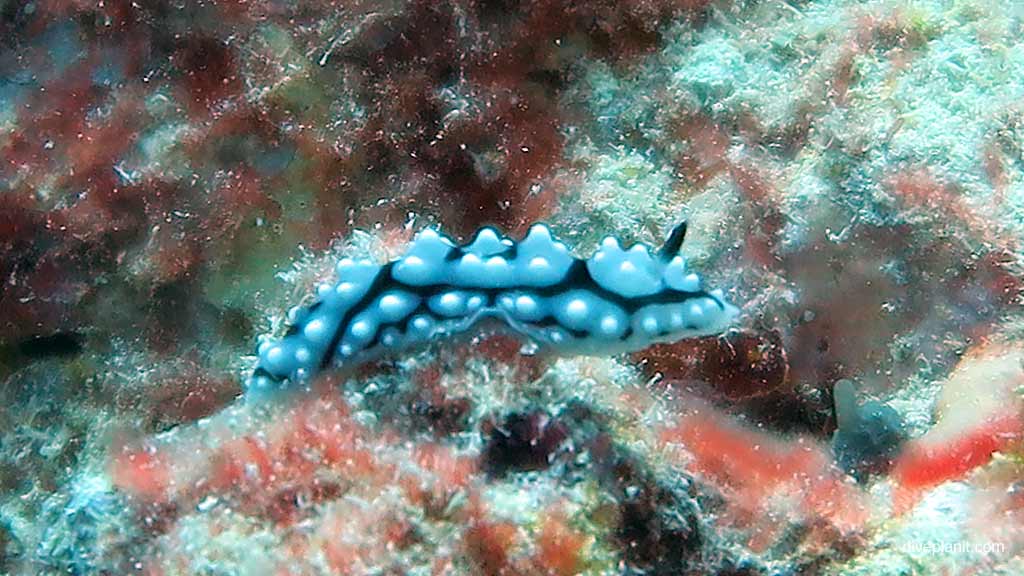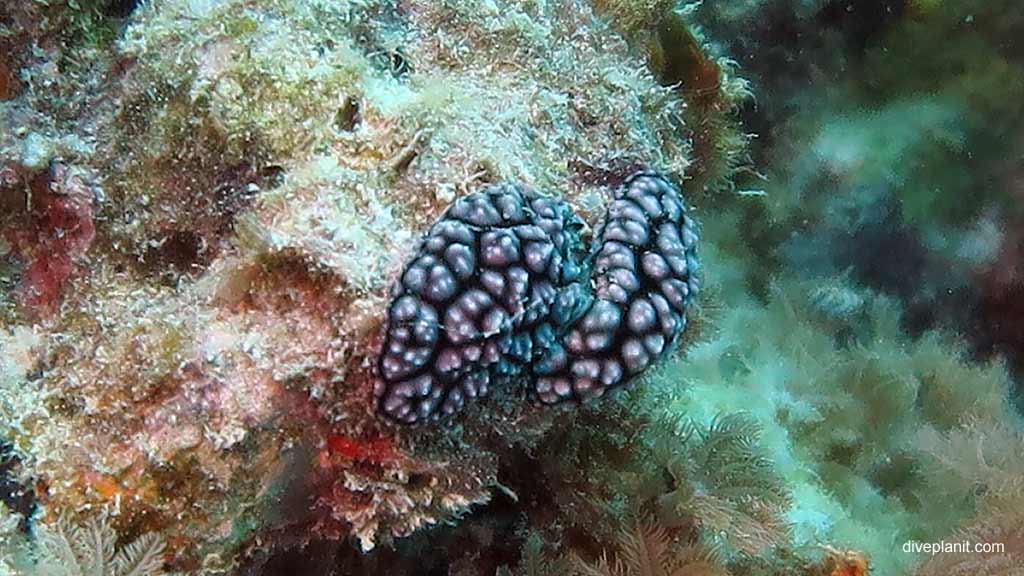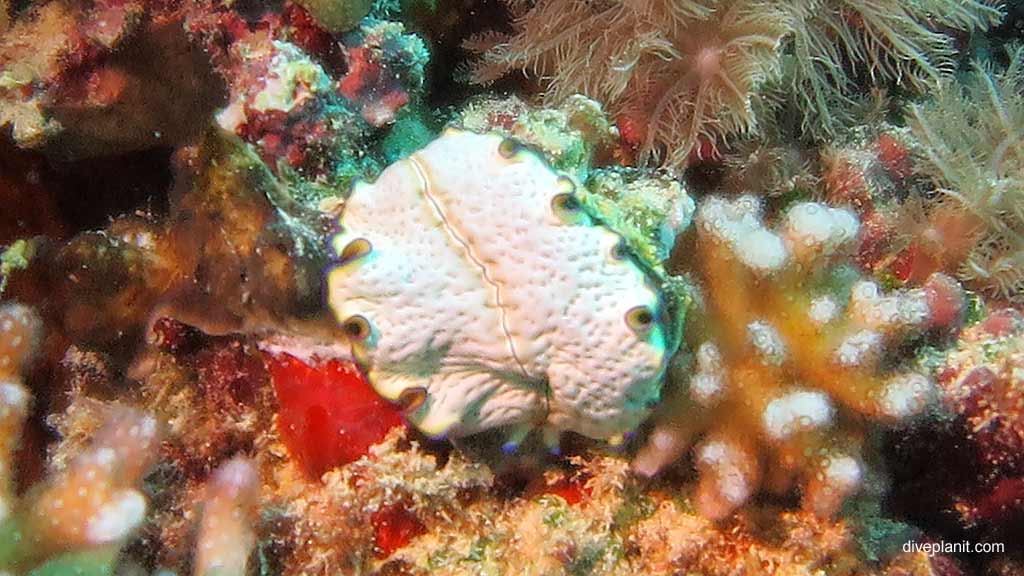| Site Type: | Macro (Nudi's) |
| Depth: | Top: 5M Median: 12M Bottom: 20M |
| Location: | Hardy Reef is about 50kms north of the Whitsundays conveniently accessible via ReefWorld owned by Cruise Whitsundays. |
Five dives on Hardy Reef, part of the Great Barrier Reef, were undertaken on two consecutive days in spring during a ReefSleep overnight stay on ReefWorld owned by Cruise Whitsundays. Rather than document what we saw on any particular dive, it seems more useful to illustrate the large variety of corals, fish, nudis and other miscellaneous critters by type, so this 100m stretch of reef is covered in four parts: Hardy Reef Fish, Hardy Reef Coral, Hardy Reef Seastars & other critters, and Hardy Reef Nudis. So take your time and read them all. This one is illustrates the great variety of Nudibranchs at Hardy Reef.
Let’s start with some super slugs such as the Brilliant Headshield Slug (Chelidonura electra).
It appears devoid of any real features like eyes, nose, mouth etc, yet is perfectly happy to crawl amongst the coral.
The Headband Headshield Slug (Chelidonura inornata) at least looks like it has some facial features, though I suspect they are simply decoration.
The Reticulidia Halgerda looks like a cross between a banana and a pineapple, and at least has some rhinophores.
The flatworms too have rhinophores – often the only giveaway as to which is the front and back. Here is the lovely Leopard Flatworm (Pseudobiceros pardalis).
Another one, (which I’m not too sure about), I called the Fuchsia Flatworm in blue (Pseudoceros ferrugineus). (I hope they do come in blue, as they are usually red/orange).
Here is one I am sure about, as Mary Garson got to name it herself the Maritigrella marygarsonae.
Another one that’s reasonably well known, the Persian Carpet Flatworm (Pseudobiceros bedfordi).
This one can swim, though it appears to go backwards, as it was leaving this piece of coral as I photographed it, not arriving!
Next up, a couple of nembrothas. The first is definitely a Chamberlain’s Nembrotha (Nembrotha chamberlaini), sometimes referred to as the Harlequin.
A pint of beer to anyone who can name me this one.
Then we have the phyllidias, the Swollen Phyllidia (Phyllidia varicose)
And the Occelated Phyllidia (Phyllidia occelata) this one with blue rings.
And then the phyllidiella, like Liz’s Phyllidiella (Phyllidiella lizae)
And the aptly named, Pimpled Phyllidiella (Phyllidiella pustalosa)
And finally, a rather plain looking flatworm, any ideas what we should call him?

